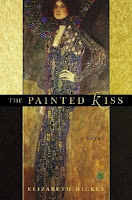The lost specimen of an extinct bird, 18th century love affair, a 20th century treasure hunt, and cryogenically preserved DNA.
Martin Davies’ debut novel, The Conjurer’s Bird, encompasses all of these components and tells a romantic tale which incorporates the real-life disappearance of the “mysterious bird of Ulieta”, a bird collected during Captain Cook's second voyage to the South Seas.
The novel hovers between two main characters and time periods: the 18th century naturalist Sir Joseph Banks and the fictional modern-day John Fitzgerald, a conservationist, taxidermist and researcher of extinct birds.
Davies’ novel manages to address both social issues and gender politics in the 18th and 20th centuries without losing its allure as an enjoyable easy read that will appeal to both men and women. A reader’s guide to The Conjurer’s Bird can be found here.
Fans of Servants of the Map by Andrea Barrett and Easter Island by Jennifer Vanderbes will thoroughly enjoy The Conjurer’s Bird.
For those who might prefer nonfiction treatment of the topics addressed, try Wanderlust: A History of Walking by Rebecca Solnit, Joseph Banks, a Life by Patrick O'Brian or at websites here, here , here and here.
Sunday, January 17, 2010
Monday, January 11, 2010
DATE January 2010 selection
Gustav Klimt. Emilie Flöge.
Which name rings familiar? If you’re like most people, artist Klimt’s name will fire the synapses and his famous painting, The Kiss, will come to mind.
Who Emilie Flöge was is a bit more occluded. She was a fashion designer, co-owner of a long-lived Viennese fashion salon, Klimt’s sister-in-law (her sister Helene married his brother Ernst) and Klimt's model. Rumors persist that she was also Klimt's mistress.
In the vein of Tracy Chevalier's The Girl with a Pearl Earring, The Painted Kiss is a historical novel about Gustav Klimt and his muse, Emilie Flöge. Elizabeth Hickey's debut novel imagines (or illuminates, if you will) the relationship between Klimt and Flöge.
Little beyond bare facts is known about Emilie Flöge and the nature of her relationship with Klimt. She was the model for two of Klimt’s most famous paintings: The Kiss and The Portrait of Emilie Flöge. Flöge and her sisters, Pauline and Helene, founded their fashion salon, Schwestern Flöge (Flöge Sisters), using many of Emilie's own designs.
In fact, Klimt and Flöge collaborated on dress and fabric design. Much of their joint work wound up both in Klimt’s paintings and in the clothing produced by Schwestern Flöge salon.
Hickey addresses exactly how much of The Painted Kiss is factual in an author’s note at the end of the book. Or here, just select Author’s Note from the drop menu.
 The Painted Kiss is a good read. Hickey skillfully marries fiction and history. A reading group guide for The Painted Kiss can be found here. Hickey is author of a second novel, A Wayward Muse.
The Painted Kiss is a good read. Hickey skillfully marries fiction and history. A reading group guide for The Painted Kiss can be found here. Hickey is author of a second novel, A Wayward Muse.Other good books that combine history and fiction are The Girl with a Pearl Earring by Tracy Chevalier, Servants of the Map by Andrea Barrett and Easter Island by Jennifer Vanderbes.
Subscribe to:
Comments (Atom)



